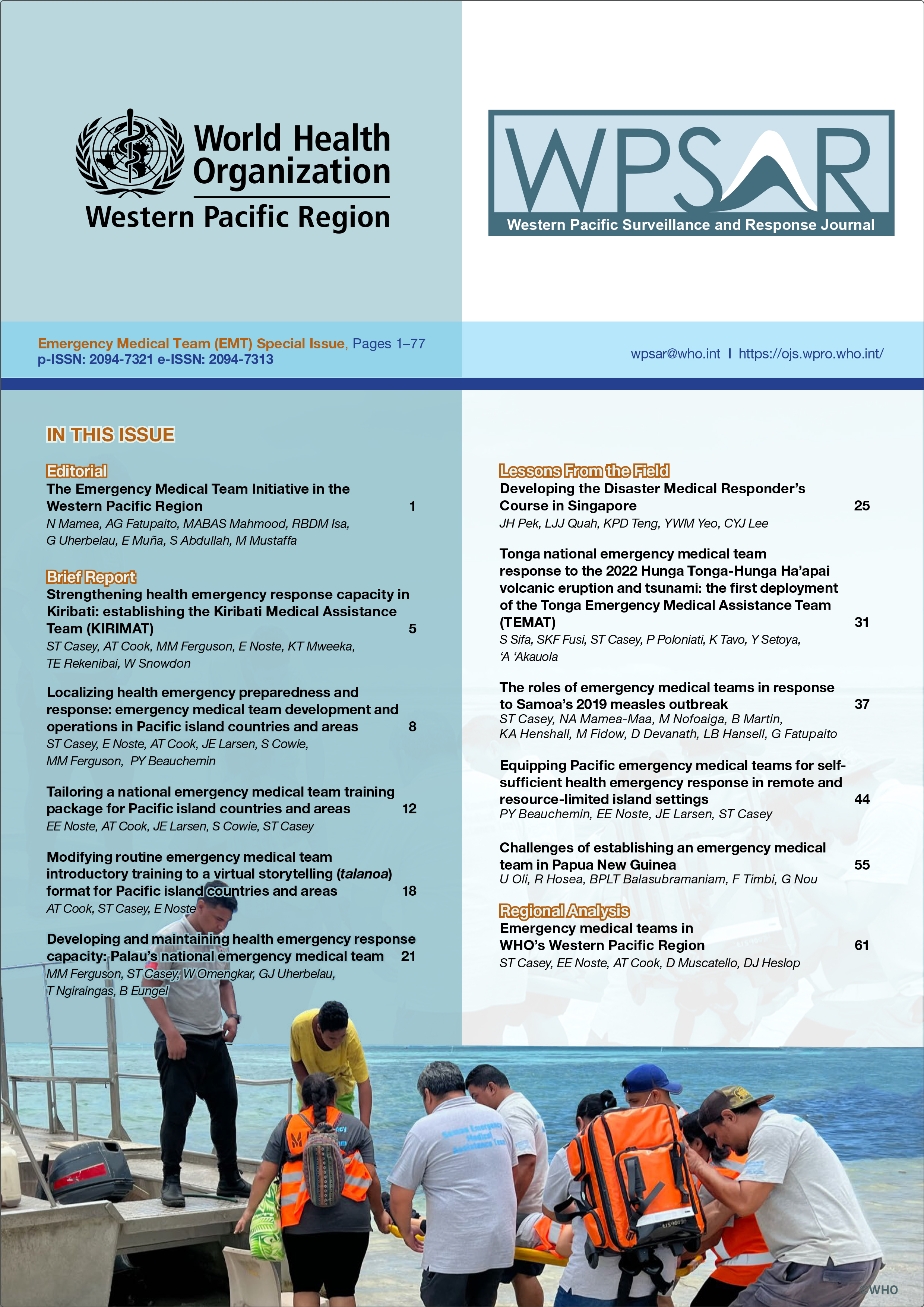Equipping Pacific emergency medical teams for self-sufficient health emergency response in remote and resource-limited island settings
DOI:
https://doi.org/10.5365/wpsar.2023.14.6.1032Keywords:
logistics, emergency preparedness, emergency medical teamAbstract
Problem: Pacific island countries and areas represent some of the most disaster-vulnerable locations in the world, facing a range of natural and infectious hazards along with incredibly challenging logistics and limited human resource pools.
Context: The World Health Organization supports the development of emergency medical teams across the Western Pacific Region. Since 2021, one aspect of this support has been supplying health emergency response equipment called cache kits for these unique island contexts. This report describes the process of designing and implementing standardized cache kits for these teams.
Action: Emergency medical team cache kits were designed and sourced using a semi-structured six-step approach: 1) problem identification and review of existing literature; 2) targeted key informant interviews and stakeholder consultations; 3) the alignment of cache with the goals and objectives of the teams’ operations; 4) creation of the kits; 5) local and international procurement of selected items; and 6) monitoring of the delivery of cache to destination countries.
Outcome: The Organization procured specialized cache kits for 12 teams across the Pacific subregion. They comprise portable, durable, lightweight equipment that enables teams to deliver high-quality emergency medical care in remote and resource-limited island contexts.
Discussion: The Organization's centralized procurement of the cache kits in the Pacific aimed to facilitate nationally led health emergency responses, enhance team interoperability in the subregion, and ensure access to high-quality equipment in resource-constrained locations. The model established in the Pacific could serve as a blueprint for national emergency medical teams in low- and middle-income countries globally.

